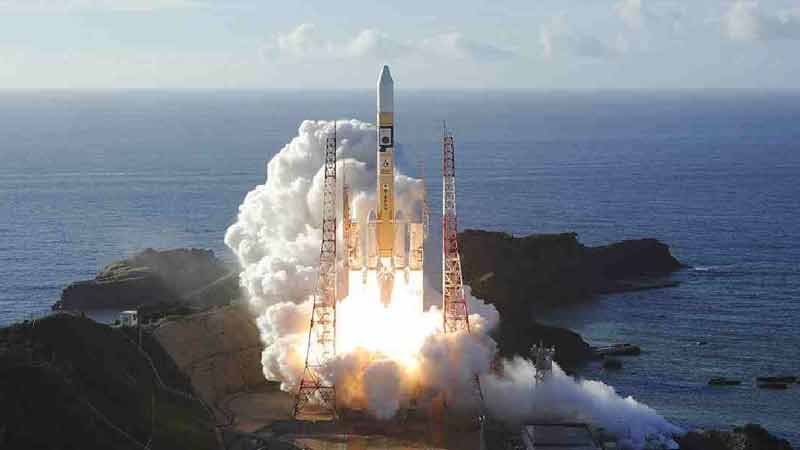A United Arab Emirates spacecraft rocketed away Monday on a seven-month journey to Mars, kicking off the Arab world’s first interplanetary mission.
Two previous attempts to launch the probe in the past week had to be called off because of adverse weather.
The liftoff of the Mars orbiter named Amal, or Hope, from Japan marked the start of a rush to fly to Earth’s neighbor that includes attempts by China and the United States, reports AP.
The UAE said its Amal was functioning after launch as it heads toward Mars.
Omran Sharaf, the project director of Emirates Mars Mission, told journalists in Dubai about an hour and a half after the liftoff that the probe was sending signals.
Sharaf said his team now would examine the data, but everything appeared good for now.
Hope is set to reach Mars in February 2021, the year the UAE celebrates 50 years since the country’s formation.
It blasted off from the Tanegashima Space Center on a small southern Japanese island aboard a Mitsubishi Heavy Industries’ H-IIA rocket, on time at 6:58 a.m. (2158 GMT Sunday) into the blue sky.
Mitsubishi said the probe has been successfully separated from the rocket and is now on its solo journey.
The launch had been delayed for five days because of stormy weather.
A newcomer in space development, the UAE has successfully put three Earth observation satellites into orbit.
Two were developed by South Korea and launched by Russia, and a third — its own — was launched by Japan.
A successful Hope mission to Mars would be a major step for the oil-dependent economy seeking a future in space, coming less than a year after the launch of the first UAE astronaut, Hazzaa Ali Almansoori.
He spent over a week at the International Space Station last fall.
The UAE has set a goal to build a human colony on Mars by 2117.
The Amal spacecraft, along with its launch, cost $200 million, according to Omran Sharaf, the UAE project manager.
Amal, about the size of a small car, carries three instruments to study the upper atmosphere and monitor climate change while circling the red planet for at least two years.
It is set to follow up on NASA’s Maven orbiter sent to Mars in 2014 to study how it went from a warm, wet world that may have harbored microbial life during its first billion years, to the cold, barren place of today.
Hope also plans to send back images of weather changes.
Japan, a U.S. ally, has already long collaborated in defense and space technology.
Two other Mars missions are planned in the coming days by the U.S. and China.
The U.S. plans to send a rover named Perseverance to search for signs of ancient life and collect rock and soil samples for return to Earth. Liftoff is targeted for July 30. China aims to explore Mars with an orbiter and rover to study the planet’s surface, and search for water and ice. This launch is set for around July 23.
Japan has its own Mars mission planned in 2024.
Japan Aerospace Exploration Agency, or JAXA, plans to send a spacecraft to the Martian moon Phobos to collect samples to bring back to Earth in 2029.AP

